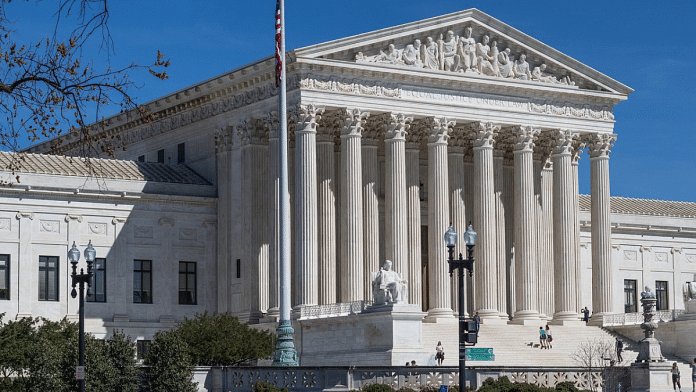In the intricate tapestry of America’s history, certain pillars rise tall, enduring through time, emanating strength and principle. One such sentinel is the American Bar Association. Since its inception, during an era brimming with aspiration and reformation, the ABA has continuously endeavoured to uphold the golden scales of justice. Its legacy isn’t just recorded in legal ledgers, but etched into the heart of the American ethos. Through courtroom advocacy and grassroots outreach, the ABA has illuminated countless lives, sending an unwavering message: in the pursuit of justice, you are not alone.
This sentiment resonates more deeply than ever, with the ABA’s groundbreaking decision to elect Mary Smith, the first Native American woman president this year. With each step of her historic ascent, Smith carries the weight of an indigenous legacy, coloured by endurance and resilience. Her rise to this esteemed position serves as a beacon not only for Native American women but also reverberates across global boundaries, echoing the ambitions of those systemically suppressed. Through her dedication to addressing caste-based discrimination, a cause championed by Dalit rights advocates including this author, Smith magnifies the commitment to expand justice’s boundaries beyond the conventional.
The ABA’s recognition of caste discrimination is particularly poignant when contrasted with the heart-rending experiences of individuals who have endured its traumatic grasp. The haunting spectre of caste, particularly in South Asia, has shackled millions. It’s a vile ancient chain, old as time, inflicting countless Dalits with lives marred by prejudice, violence, and destitution. Their stifled cries and shattered dreams have yearned for the embrace of justice.
HOD Res 513: Adopted. Urges adoption of laws, policies to prohibit discrimination on the basis of the caste system, which particularly affects those of South Asian descent living in the U.S. #ABAAnnual
— American Bar Association (@ABAesq) August 7, 2023
The ABA’s audacious initiative to combat this age-old demon of discrimination heralds not just progress but a revolution. It instills hope into scarred souls, promising a future where dignity is determined by one’s spirit, not lineage. One cannot help but reflect on the author of this editorial, an impassioned advocate for Dalit rights, who experienced the sting of caste discrimination profoundly. Their painful exodus from India following the brutal Khairlanji massacre underscores the visceral reality of caste oppression. This heinous act, which shook the conscience of many, wasn’t merely a remote incident in rural India; it symbolised the deep-rooted prejudices that have scarred generations. The author’s personal protest, by leaving their homeland, speaks volumes about the agony and despair felt by those who are perpetually oppressed and marginalised.
It’s crucial to recognise that their courageous departure wasn’t an escape but a testament — a powerful statement to the world about the depths of caste brutality. Their journey from the vibrant landscapes of India to the American shores wasn’t solely geographical; it represented a transition from the haunting memories of Khairlanji to the hopeful corridors of advocacy in the West. There, they aspired for their voice, resonating with the collective pain of countless Dalits, to be heard with greater empathy and urgency.The inclusion of their story, their personal struggles and migrations, adds a profoundly human dimension to the broader discourse on caste-based discrimination. It’s a stark reminder that behind every policy, every statistic, lies a human narrative, a beating heart longing for justice and acceptance.
Also read: California anti-caste bill a milestone in equality. It’s a role model for others to follow
Confronting systemic biases
Resolution 513 by the ABA stands tall in this fight. By urging Congress, agencies, academia, and legal practitioners to acknowledge and eliminate caste-based discrimination, it reflects an evolved consciousness in human rights recognition. It’s a clarion call for empathy, understanding, and action, advocating for the inclusion of caste in anti-discrimination policies. This isn’t just a legal amendment; it’s a balm for deep-seated wounds, promising a dawn after centuries of darkness.
The ABA’s pursuit isn’t a mere addition to anti-discrimination terminology; it’s an acknowledgment of the insidious, deep-seated prejudice that scars countless lives. It’s a reckoning, a recognition that the quest for justice remains incomplete until all shades of discrimination are eradicated. With this monumental move, the ABA has ignited a guiding light for others to follow. The eradication of caste-based discrimination isn’t just timely; it’s a moral imperative.
The ABA’s intervention goes beyond traditional advocacy; it confronts systemic biases that have persisted for ages. While significant legal actions against companies shed light on parts of this issue, they only scratch the surface. The ABA’s proactive stance sends a clear message to all: the fight against caste discrimination is paramount. The legal fraternity, with its influence, can bring about transformative change — through law, litigation, and enlightenment.
However, recognition is just the initial step. This mission requires collective efforts from the legal sector, the government, and society to eliminate caste-based discrimination. Achieving this goal demands persistent education, robust policy enforcement, and, above all, cultivating empathy and understanding. Only through such dedicated endeavours can we genuinely ensure that caste no longer dictates destiny, be it in America or anywhere else.
The ABA’s journey, spanning from John Adams’ time to the era of Obama, testifies to perseverance. Just as Lincoln guided the nation through tumultuous waters and Roosevelt rekindled hope from despair, the ABA’s commitment to eradicating caste discrimination shines brilliantly through the ages. It’s more than a policy; it’s an invocation of humanity’s collective spirit.
As we stand at this historic crossroads, the path ahead diverges — one entrenched in age-old prejudices, the other leading to a brighter, more egalitarian future. Let our choices be guided not by archaic dogmas but by the silent cries for justice. Let us shape a world radiant with hope, empathy, and justice, charting a course for future generations.
The author is the president of Foundation for Human Horizon, an UN-affiliated NGO that’s
leading the Anti-Caste legislation movement in the USA and an Artificial Intelligence (AI)
Research Scholar at Johns Hopkins University. Views are personal.
(Edited by Prashant)



